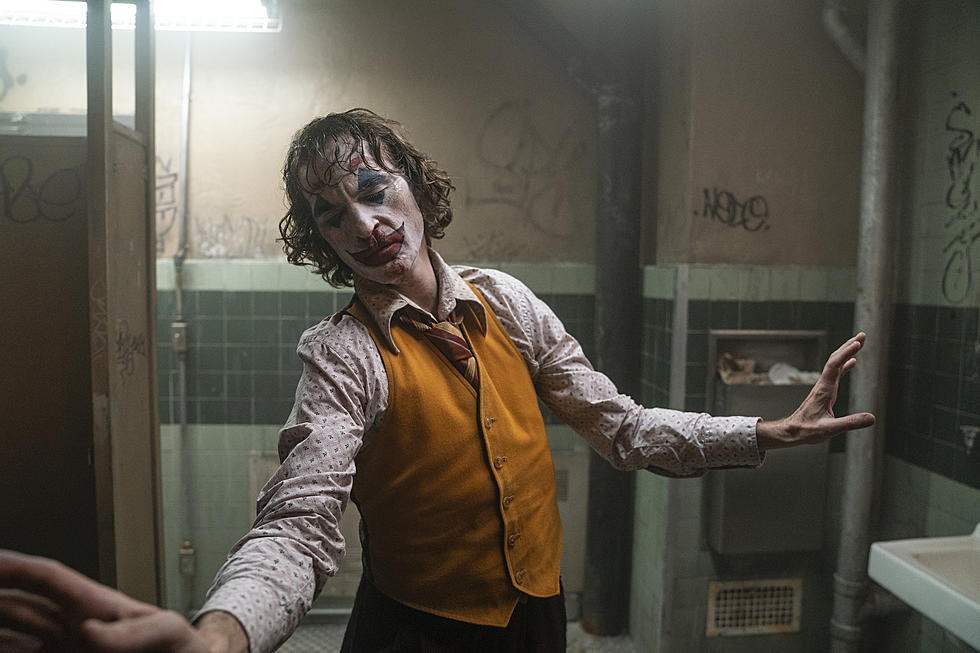![I’ll Never Go That Big Again: Scott Snyder On ‘Zero Year: Savage City,’ Part One [Interview]](http://townsquare.media/site/622/files/2014/08/ZY01.jpg?w=980&q=75)
I’ll Never Go That Big Again: Scott Snyder On ‘Zero Year: Savage City,’ Part One [Interview]
For the past year, I've spoken to Scott Snyder for a series of in-depth interviews about Batman: Zero Year, the new origin story that he, Greg Capullo, Danny Miki and FCO Plascencia have produced for DC Comics. In the final act, "Savage City," Batman was confronted with a Gotham City that had been destroyed by a super-storm, was overrun by plants that had grown out of control, and was being held in the iron grip of the Riddler, all while confronting the trauma that inspired him to become a hero.
With the full story completed, I spoke to Snyder for the first part of a two-part interview about how he felt he'd achieved his goals with the bestselling story, the inspiration for the dynamic visuals, and his meeting with Frank Miller, possibly the most definitive Batman author, who had one very specific note about the story.
ComicsAlliance: Let's start with the hardest question. Do you think you accomplished what you set out to do with "Zero Year?"
Scott Snyder: For me, the goal with the storyline, and this was always the mandate to Greg Capullo, FCO Plascencia and to Danny Miki, was to try to follow in the footsteps of Batman: Year One by inverting that formula but following the spirit of that book as closely as possible. We would make an origin that was intensely personal to us, and hopefully intensely contemporary, as we see elements that we think are the sources of fear nowadays, and in that right do something completely our own. In that regard, I'm extremely proud of it. I feel like I accomplished what we set out to do with it.
Personally, honestly, I know it's long, and I know that it's an imperfect thing, but it's my favorite thing that we've done by head and shoulders over anything else, even though other stories like Batman: Court of Owls or Batman: The Black Mirror are cleaner. This one is really emblematic of where I hoped to get on the book, having been inspired by people like Frank Miller and, more recently, Grant Morrison, who were so fearless with the character and so daring with trying to make books that were relevant both to them as writers and to the cultural zeitgeist. So yeah, I'm really happy with what it achieved in that regard.
CA: One of the things we've talked about in the past with the different arcs of Zero Year is how much of a superhero story it is. I always joke about the end of the "Dark City" portion, where Batman jumps through a hurricane from his Super-Bat-Blimp to fight a bone monster on a giant flying question mark. It's in every part of the story, but in the third act, "Savage City," you really go way over the top with it. There are elements of different stories like Batman: No Man's Land going on, and then you have so many big superhero moments. There's a robot with machine gun arms with a neon green question mark on the front.
SS: Yeah, completely, within a disco ouroboros game board by a sphinx. The idea was to go antithetical to Year One, where that story is so intimate and gritty and almost claustrophobically powerful as a story about two men who are alienated and alone as two warriors for Gotham, in ways that are going to eventually spell their doom. The fact that they have each other is the point of that book -- to be a hero in Gotham, you're always going to be alone, but you can be alone together. We wanted to do a book that, again, the only way to do it, would overthrow it entirely. Not trying to tread anywhere near the same material, because that book is such a masterpiece.
I lean that way. When you look at things like Court of Owls... I try really hard to class up the superhero elements with my best fake science. I go back to ancient Greece with the coins, like "this is the symbol of power, the owl that was on these Athenian coins," and it was.

CA: You do like your historical trivia.
SS: I take it very seriously to make it as believable as possible, and make your suspension of disbelief as un-elastic as it needs to be. I try not to stretch it. But when you look at the elements of a story like that, there are undead ninja assassins from hundreds of years ago coming back to life in a vault and attacking Gotham all over the place.
Similarly, with everything I've done, I've always loved that bombast, that muscular, fun element of superhero comics. American Vampire plays to that, and sometimes I veer away, like Wytches, which is really dark and cold. But that idea that the comic should be fun, and it shouldn't be afraid to be exuberantly colorful and odd and eccentric and larger than life.
Popcorn was always part of that mission statement to the other people on the team, right from the beginning. For example, FCO, our colorist -- and I think they published this in the script in the Director's Cut of issue #21 -- you can see the note I sent him about how he shouldn't use any grays, blacks or browns as primary elements of coloring the story; that it should all be pinks and greens. He really took to that, and he just loved it from "go," and he was born to do that kind of Batman story. The idea was to go as huge and over-the-top in that regard, not just because it would subvert some of the expectations about what an origin story could be, but because it was natural to me as well. I love giant, epic Batman stories and superhero stories in that regard, that just throw off the fear of being silly. If you love those elements, Riddlerbots and Bone Monsters and that stuff, hopefully other people will as well.
CA: Visually, in "Savage City" in particular, there's so much that feels like that Silver Age idea, where [influential DC editor] Julie Schwartz would come up with the covers first and then writers would have to write stories around those striking images. You've got Batman and two lions on the cover to issue #33, which becomes a reference to that Golden Age story where Batman goes to storybook land and chokes out a lion with a sleeper hold. Was that part of the process? The thought of someone picking it up off the shelf and flipping through it, and just needing to find out why Batman was wrestling lions and riding dirt bikes?
SS: Yeah. I think that's part of it, definitely. What we were doing was more about trying to invite them in with, again, subversion of expectations about the origin, and showing how much fun we were having.
For me, post-apocalyptic Batman was something I always wanted to do in some way, and one of the options, to be totally frank, something that I think DC would've probably preferred, was to do it in the present with Riddler. It would be something he set up now, turning Gotham into this wild city. It could've easily been a crossover. I mean, you can see it rolling out in front of your eyes, and it could've been another event like Court of Owls in the present, with the city overgrown. Honestly, there are days I regret that, not because of Zero Year, but because of how fun it would've been to crossover with the other books. But coming off of Joker [in Death of the Family] and Court of Owls, and having things like Trinity War and Forever Evil happening on a scale that we'd be competing with or working in tandem with, and becoming so big in terms of how many other books played into the story, I just started to feel really uncomfortable with the idea of doing another event.
I came up with the idea of the post-apocalyptic city as part of Zero Year, so it would've been a cannibalization of that idea anyway to put it in the present. But those elements, the reason I wanted to do it anyway, was that it would be part of the origin. What if Batman formed in a city that was so ruined that it's exactly the kind of story that people love nowadays? It plays into our fears about the sudden breakdown of communication, resources and government, the sort of thing that makes zombie stories so incredibly popular. There's such a love of post-apocalyptic stuff now, and my feeling was that that's why it would be so potent, as opposed to just being another event: Putting Batman's first challenge as something that spoke to today's fears and fantasies.

CA: You've been on Batman comics for four years, starting with The Black Mirror, and Zero Year is clearly your biggest story.
SS: Yeah, I'll never go that big again, ever.
CA: That's what I was wondering. Do you feel like you're competing with yourself by setting this story in the past? It's not just Batman against the Red Hood, it's not Batman versus Dr. Death, it's not Batman against the Riddler, it's all happening at once in this completely destroyed Gotham City. There's no way to raise the stakes, and you make that the first thing Batman ever did. You destroy Gotham City on page one.
SS: I think my goal with the character, and I hope it shows, is to never do something that feels repetitive on the book; to try to always zig-zag. You go from something like Black Mirror that's very noir-ish and detective-oriented, very ground-level Batman, to something like Court of Owls that pits Batman against my first time making a supervillain, this over-the-top threat to the whole city; and then into Death of the Family, which was only five issues, really intimate and horror-driven, to Zero Year, which is as colorful and bright as we could try. My feeling is to not think about it in terms of topping myself, but to move away from the material I was doing into something different.
My goal on the book now is partially a thank-you to readers for letting me do something that was so long and set in the past and maybe a little self-indulgent, and touch all this material that I was terrified of. I knew DC wanted to do something with it, and I was worried that if it wasn't me, it would definitely be someone else doing it. I had this story I'd always wanted to do in some variation, and when they were pushing and saying "Batman's the only character where we haven't shown his early years [in the New 52 continuity], do you want to do it or do you want us to think about it in another way?" I had to do it.
For me, the goal now is to do stuff in the present that makes the mythology surprising and different, and to try and live up to the spirit that I think the editor, Mark Doyle, is trying to bring to the books, and that we're all trying to bring for Fall and Summer. It really revolves around this idea of nothing familiar. We're trying to celebrate Batman by changing what's there, so instead of doing this thing that's a huge, epic retelling, I'd rather from this point forward say, "Let's burn everything down and rebuild it in different ways that show how malleable and how vibrant this character and his cast really are." That's what I mean.
Nothing I do will ever approach Zero Year again in terms of scope. I can't imagine doing something on Batman again that's twelve issues. [The forthcoming] "Endgame" is only six. And I understand that there's only so many times that you can put Gotham in peril, so it becomes about what you do next. How do you make it so that Batman's in peril, emotionally?
You're right, it gets intimidating, but it's a fun challenge. You try to zig-zag. Not to get lost in a corn maze in my own head, but the writers that I like the most, like Brian K. Vaughn, Jason Aaron, Jonathan Hickman and Grant, too, they're so nimble and agile. Jason can write something like Wolverine and the X-Men, but he can also write Scalped, and you can recognize his voice and interests in both of those, because of what he explores in his heroes. Even though there's an elasticity in that range, it's so impressive to me that he's always exciting as a writer. He moves in so many different directions, but it's always him.
In that way, that's part of the goal on Batman, to challenge yourself to do something each time that's personal -- the next story, "Endgame," is really personal, it's about coming to terms with your own mortality in some ways -- but to try something that's essentially very different than anything you've done before, with the character and in general.

CA: Is there symbolism to "Savage Cty," in that you're literally going back and destroying the Gotham City of the past?
SS: That was part of the speech at the end. I grew up in New York in the '80s, and the thing that made Year One so potent at the time was that that was the city. You weren't allowed to go to Times Square, where Frank Miller lived; that sense of danger and rot and corruption was everywhere. It was one of those stories that was so immediate, and now you look at it and it's stylized. You recognize Mazzucchelli's artwork, but at that moment, it was, "Why does Batman look like he's walking around in the real world?"
For me, I don't know. It's hard, because I get intimidated all the time by my own anxieties with the character. The idea wasn't to tear it apart, but, like Bruce says when he first returns to Gotham in the story, "The city has changed since I left." It's not gangs and corruption, it's this viral, terrifying random crime. The end, to take that city and have it destroyed and reborn as an idea by Batman, with the electrode that Riddler has on at the end, is that idea of Riddler saying "the city is mine, it's my idea, it's crippled my ideas, and I own it. To take this off of me, you have to kill it and have it reborn as the idea of whoever manages this impossible task." When Batman does that, it's his city now, but it's also the city that came before Batman. Our Batman dies and is reborn.
We try to do that a lot in the story. Even the name of the super-storm, Renee, is "reborn." Maybe this doesn't come across, but we try to make it okay to retell Batman's origin for each generation. That's part of the mission for me. Year One has stood for so long, because it's such a masterpiece, and it will never be taken down. It will never be usurped, it will always be better than anything we can do, because of its cultural importance, because of its mastery on the page from everyone involved, but that shouldn't mean that you can't do an origin when the cultural zeitgeist has changed. To have Batman be a warrior against the fears of that moment. The fears of that book, to me, the fears of New York, living there with my wife and thinking about going back with my children, those aren't the fears anymore. There are other fears, and to make Batman potent for me as a writer, or even as a reader, he has to stand up to those and be about those, and be an inspiration to defy those.
That's what we were trying to get at, burning down the city in that way. And the funniest thing was meeting Frank. We've hung out a few times now, but I met him for the first time right as I was finishing the story. I had been asking DC forever to meet Frank Miller, since I had first been there. They set up a dinner, and I was so nervous. I was terrified, they said he'd read the first couple of parts, and that he was reading the end, and I was terrified that he was going to hate me for even trying to come near Year One. When I met him, we were in this bar, and he came in. You see this black hat, and it's like, "Oh God, there he is. He's probably going to tell me how sh*tty it is." He comes up, and he's an iconoclastic dude, he's really odd, and I'm like, "What if he just destroys me?"
The first thing he said, which was awesome, was, "I want you to know I read your book, and you gave him a good goddamn haircut for once."
CA: [Laughs]
SS: It was the greatest thing anyone has ever said to me, and I said to him, "Can I please use that as a blurb on the cover?" "You gave him a good goddamn haircut." -- Frank Miller.
We sat down and talked, and he was incredibly sweet in general. He said he liked it, and that he'd be happy to talk about it because he felt it was in the spirit of Year One. That meant the world to me, and it was like an acknowledgement that we weren't necessarily burning down his work and trying to destroy it, even in that third part. What he did was a call to arms for anyone who writes the character, a mission statement, or a challenge, where you have to take that character on more than any other character in comics, and make him personal and relevant and immediate.
More From ComicsAlliance









